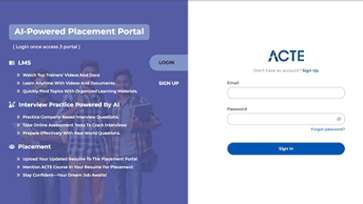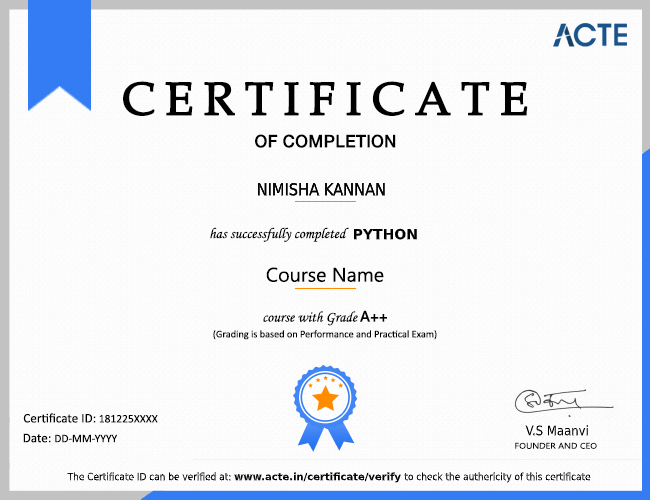It will also aid companies in their process of restructuring aspects and new start-ups to start up their businesses. Teaching programs range from training people in the management of change to developing change expertise to equipping people in your business to teach managing changing internally. Whatever programs you choose, you enhance your abilities and assist your organization to adapt to new developments, improve the culture of the firm and boost project results.
Additional Info
Intro Of Change Management Training :
The concept of change management describes the processes, tools, and techniques that an organization deploys to manage the human aspect of change in the workplace. An effective change management policy, or change management process, ensures a planned objective is delivered. It is the act of coordinating the physical actions needed for a business to go from point A to B to meet the business objective that lies on the other side of the coin.
Individuals are trained in change management to ensure a positive outcome during the change process, and can also manage their extended teams. In response to organizational change, change management provides a systematic approach. There is leadership in place to deal with change across the goals, mission, processes, and use of technology across an institution. A person's actions cannot determine the outcome of a change process. In actuality, multiple moving parts have to work together to ensure smooth transitions. It is imperative that we approach change management in a manner that facilitates smooth transitions and increases buy-in from all relevant parties. An effective change process begins with an organized structure that reduces chaos and waste and ensures that everything goes smoothly.
You will ultimately impact them all when you introduce any change to the organisation :
- Workflows
- Systems
- Structure of the organization
Roles of the Jobs :
All of these elements will be of high interest to each of the existing teams. In order to successfully manage a change programme, an organization must either hire people who have successfully managed similar projects or offer training through their leadership and development programmes.
Our goal is to help our clients become successful change managers by describing the five stages that follow.
- Visioning the Future :
A line manager must be able to effectively share his or her vision with the team while at the same time defining the role and expectations of each team member.
- Knowing How People React to Change :
Being able to understand how people respond to change will help you, as the change manager, provide support at the appropriate time to the right people. By doing this, you will minimize initial resistance and maximize contributions from those who champion and support the project - this ultimately means more people will work with you and fewer will work against you!
- Stakeholder Management :
Building, maintaining, and influencing formal and informal stakeholder networks is one of the most important skills for any manager. Using these networks will enable the overall project to achieve milestones as well as serve as a valuable resource in identifying conflict areas and therefore key partners that can be relied on for help in resolving issues.
- Strategies and Tools for Change Management :
Can you identify the best strategy for implementing your change program successfully? Can you spot and track the changes that accelerate and constrain change, You can anticipate and mitigate the consequences and effects of change if you manage these strategies and tools effectively.
- Dynamic Change Triggering :
An organization's ability to implement change is determined by the planning it does ahead of time. As a change manager, you must have the ability to establish a short and long term perspective, anticipate possible challenges and engage and motivate your team to focus on success rather than floundering at the first hurdle.
Generally speaking, organization change refers to the processes that a business uses to alter or modify a significant component of the organization. The company culture, internal processes, infrastructural elements, corporate hierarchy, or any other aspect of the company is critical.
Adaptive and Transformational Organizational Change can Both Occur:
A company adopts adaptive changes to evolve its products and processes over time. They are small, gradual changes that iterate over time. An administrative or management staff member hired to address increased demand would be an example of adapting to the situation.
Changes marked by transformation are more significant in scale and scope and often signify a dramatic shift in status quo. Transformational change can be the introduction of a new product or division, or it can be an expansion overseas.
The goal of change management is to guide an organization through each stage of its evolution, from conception to implementation to resolution.
There are starting conditions (point A) and a functional endpoint (point B) for change processes. In between, the process is dynamic and unfolds stage by stage. Following is a summary of the key steps involved in Change Management Course.
An Overview of the Roles and Responsibilities of a Change Manager :
You May Also Have the Following Responsibilities :
- Obtain a complete assessment of your change management strategy
- Prepare strategies to mitigate risks, analyze risks and identify the risks
- Prepare for potential resistance by identifying and managing it
- Provide consulting and coaching services to project teams
- Develop executable deliverables for the five levers of change management: a communication plan, a sponsor roadmap, a coaching plan, a training plan, and a resistance management plan
- Providing leadership support and engagement
- Supervisors and managers of coaches
- Defining roles and responsibilities and supporting organizational design
- Work with other specialists to coordinate efforts
- Continually improve your project management skills
- Verify user readiness by evaluating it
- Achieve stakeholder management
- Report problems and track progress
- Measure success metrics and track progress towards changing behaviour
- Assist with change management within the organization
- Managing the change portfolio
Qualifications and Skills :
- Knowledge of human behavior during the change process and how people cope with change
- Experience, knowledge, and proficiency in change management methodologies, tools, and processes
- Writing and verbal communication skills that are exceptional
- Listen actively and empathetically
- A clear ability to communicate with a diverse group of people
- Establishing and maintaining strong relationships
- Ability to shift others' perspectives and influence them toward a common goal
- Adaptable and flexible; capable of handling ambiguous situations
- Tenacious and resilient with a persistent nature
- Integrating a forward-looking perspective
- Strategic and tactical planning is a natural talent for this person
- The ability to identify root causes and solve problems
- An individual who is capable of working effectively at all levels in an organization
- Team player and capable of working cooperatively with others
- The ability to analyze organizational issues and challenges with acute business acumen
- An understanding of the project lifecycle, tools and approaches applicable to project management
- Knowledge of large-scale organizational changes
- Certifications or designations desired in change management
5 Steps In The Change Management Process :
1. Organizational Change Begins with Preparation :
Managing and implementing change requires a combination of cultural and logistical preparation. It is necessary to prepare culturally before delving into logistics.
During the preparation phase, managers help employees understand and recognize the complexity of change. Organizations that engage in these activities raise awareness of the many challenges or problems it is facing that are driving change and generating dissatisfaction with the status quo. By gaining the buy-in from those who will contribute to implementation, friction can be avoided later on.
2. Plan for Change and Develop a Vision :
Introducing change to the organization begins with planning a comprehensive and realistic strategy. Plans should include the following information :
The organization's goals : With this change, what goals will the organization be able to achieve.
Indicators of key performance : What will be the criteria for success? Is it necessary to move which metrics? What is the baseline for how things are currently.
Participants and team members of the project : Those responsible for implementing change, who will oversee it? Each time a critical step must be approved, who is responsible, Implementation will be the responsibility.
Scope of work : Will the project include discrete steps and actions? Are there any aspects of the project that are outside its scope.
The implementation plan should account for any unknowns or roadblocks that could arise during the implementation process, and which would require flexibility and agility so that problems can be resolved.
All that remains is for you to implement the required change by following the steps outlined in the plan. It depends on the specifics of the initiative whether that involves changes to the company's structure, strategy, systems, processes, or employee behavior.
It is imperative that change managers focus on empowering their employees to fulfill the objectives of the initiative during implementation. Besides anticipating roadblocks, they should endeavor to remove, mitigate, or prevent them as soon as they are identified. Throughout the implementation process, it is critical to communicate the organization's vision repeatedly to remind team members why the organization is seeking to change.
4. Culture and Practices Need to be Changed Within the Company :
Immediately following the completion of the change initiative, change managers should prevent reversion to the prior status quo. Organizational change can be particularly challenging when it involves processes, workflows, culture, and strategies. It is likely that during transitional periods, employees will revert to their "old ways" of doing things without an adequate plan.
It is more difficult for backsliding to occur when the company embeds the changes within its culture and practices. All tools that can help make the change stick should be considered, including new organizational structures, controls, and reward systems.
5. Analyze Results and Review Progress :
Change initiatives are not necessarily successful simply because they are completed. It helps business leaders reflect on the results of a change initiative, or conduct a "project post mortem," with the aim of better understanding success, failure, or mixed results. Additionally, it can provide invaluable insights and lessons that can be applied to future change initiatives.
Become a Change Management expert :
Organizational decision making is involved in change management strategies. It dates back to the early 1900s, but it began to take off around the turn of the century. There are now a variety of frameworks to help you create a model for managing change that consistently yields benefits for your organization. Technology adoption, process re-examinations, acquisitions, and organizational restructuring are factors that drive these types of changes. Every scenario will require an intricate network of change programs designed to ease the transition and ensure everyone has a voice. The person in charge of change should understand the ramifications of these institutional shifts.
How to Use Change Management to Advance your Career:
A good Change Management Online Course strategy should include both the human and the business aspects. Organizations can reduce the amount of trauma they experience by understanding the human side of change management. The key to successful change management is understanding how organizational culture works and implementing a wide range of strategies. Developing your leadership skills can help you weather the chaos of change, but without a plan, you will find it difficult. Change-makers who are effective at managing could find careers in management. You will gain a better understanding of the principles of change management and develop a plan for making change successful and leading your organization in a more effective direction.
How Good Is a Career in Change Management?
We evaluated several factors, and all of them strongly suggests that change management is an excellent career path, both today and in the future. We evaluated salary information, industry growth, future prospects, and job availability for people with careers in change management. If you're just starting out after college or changing careers, the question, "How to become a change manager," is a good one to ask.
Tool that manages all aspects of Change management can be a good career choice for a number of reasons:
Jobs are plentiful : Over 38,000 job postings are returned by a search on Indeed for "change management."
A Trajectory of Upward Movement : According to the United States Occupational growth is projected at 14 percent for "management analytics," which includes change management, according to the Bureau of Labor Statistics.
Opportunities Abound : There is a need for Change Management online Course everywhere. If you're wondering how you can become a transformational leader, there are many opportunities for you. A company can hire you to work for them, or you can start your own company specializing in change management.
































